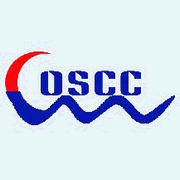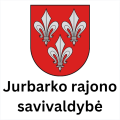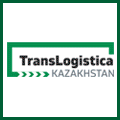MORE than 150 containers belonging to Ugandans will be lost as the Kenya Ports Authority (KPA) moves to decongest Mombasa Port.
Kampala City Traders Association spokesman Issa Ssekitto said more than 150 containers at the port belong to Ugandans who stand to lose billions of shillings (UGX1 = US$0.0004) when they are auctioned by the port authority to ease congestion, reports the Kampala Daily Monitor.
"Unfortunately, we [the association] cannot do anything right now. We have done everything possible to have these containers saved. We have written letters to all property owners reminding them about the special waiver that was put in place, some responded while others didn't," he added.
Last December the Kenya Ports Authority (KPA) announced a waiver on all containers that had stayed at the port for more than six months. The Ports Authority had then sought to decongest the port.
A special waiver on storage some charges on all overstaying containers that expired March 1 was put in place. However, more than 200 containers are still in Mombasa. The KPA have placed bids for auctioneers to dispose of the boxes in the port and at the inland container depots.
According to KPA, overstayed containers are those that have been left at Mombasa port or in the inland container depots for more than 100 days.
Source Shipping Gazette - Daily Shipping News
THE Israeli authorities have announced that a new container security procedure will be implemented on boxes booked for Haifa and Ashdod, but unloaded from the vessel at the other port.
According to Israel's Port2Port news site, in the first stage of the new security rule, imported containers considered to be risky by a customs profiling system and unloaded at the port of Haifa, under an Ashdod bill of lading, will be X-ray screened before departing to Ashdod. But imported containers considered to be risky will be moved without screening.
In the final stage, this new procedure will be implemented on containers booked for the ports of Haifa or Ashdod, but in fact unloaded from the vessel at the other port, and moved at the expense of the ocean carrier by rail or truck, prior to customs clearance.
The ocean carrier and/or the customs broker or forwarding agent, has no direct or indirect control over these container security inspections, which will lead to delays and extra expenses, the report said.
The extra costs are due to port fees, loading and unloading truck at the port, transfer costs to X-ray screening area, return the container to the port, warehousing (if applicable) and waiting time at the X-ray screening area (if applicable), which will be charged to the importer upon release of the delivery order.
The ocean carriers intend to roll these higher operating costs onto the importers, as per the tariff table that will be distributed at later stage. These new expenses are expected to impact containers being moved under DDU/ DAP /DDP terms.
Source Shipping Gazette - Daily Shipping News
THE Netherlands will supply two top quality container scanners to boost Israeli security and enhance Palestinian trade by ending cumbersome unloading and reloading of open palletised cargo for individual pallet scanning that increased costs and transit times.
The Dutch government said the scanners at the Allenby Bridge could increase the amount of trade flowing through the crossing by up to 33 per cent, something that will "help the Palestinian economy grow", Reuters reports.
Dutch Ambassador Caspar Veldkamp and the Coordinator of Government Activities in the Territories, Dutch Major General Eitan Dangot, said the scanners would also safeguard Israel's security.
As it stands West Bank exports must be loaded into boxes on pallets, then placed on trucks. The trucks then go to the Allenby Bridge Crossing where each pallet is scanned by a pallet scanner, and then re-loaded onto Jordanian trucks waiting on the other side of the border.
These trucks then drive to the Jordanian Port of Aqaba where the pallets are unloaded again, the boxes of pitchers taken out and then re-packed into containers for export, greatly adding to costs and transit times.
New container scanners will allow product to be loaded in containers at factories, and without further inspection move to the ship, reducing damage, theft and exposure to weather.
Former British prime minister, and a Quartet envoy, Tony Blair, was instrumental in brokering the deal. He said the scanners at the Allenby Bridge could increase Palestinian trade by US$35.5 million a year, which would yield $10.4 million a year to the Palestinian Authority in taxes.
Source Shipping Gazette - Daily Shipping News
TAIWAN's Evergreen Line is to resume services to North America to South America in a joint service with NYK, HMM and Hanjin on their USEC-ECSA 'ANS' service following its suspension of services three years ago.
The Atlantic North South Service (ANS) service will deploy six 2,500-2,700-TEU vessels boosting existing capacity by over half with one each provided by Evergreen (unknown capacity), Hanjin (2,553 TEU) and HMM (2,754 TEU). Three of these will be larger units of 2,664 TEU from NYK. Hapag-Lloyd and Yang Ming will co-load on this service.
ANS operates a port rotation of 42 days as follows: Norfolk; New York; Savannah; Miami; Caucedo, Dominican Republic; Santos, Brazil; Navegantes, Brazil; Rio De Janeiro, Brazil; Vitoria, Brazil; Caucedo, Dominican Republic; Norfolk.
Evergreen first entered the North America to South American trade over a decade ago in its stand alone Evergreen Inter America service deploying seven vessels of 1,100 TEU. A year later it ended the service to slot-share with Lykes/Crowley USA-ECSA until January 2009, according to Paris-based Alphaliner.
Source Shipping Gazette - Daily Shipping News
SOUTH CAROLINA governor Nikki Haley vetoed a bill that lawmakers had passed to suspend the authority of a South Carolina state agency after it granted a permit last year to dredge the Savannah River.
The permit was approved by the state's Department of Health and Environmental Control (DHEC) board in November, even though the agency's staff had originally rejected the application, the American Shipper reported.
The permit is opposed by environmentalists, and is also controversial because it benefits the terminals in Savannah operated by the Georgia Ports Authority which is in strong competition with the South Carolina State Ports Authority's facilities in Charleston.
Governor Haley said in her veto message that the joint resolution, which was unanimously approved by both South Carolina's House and Senate, "amounts to unconstitutional legislative overreaching into an agency's ruling" and "reflects a fundamental misunderstanding about the administrative process."
At issue is a water quality permit that DHEC approved last year, which is also being challenged in court. In December, the Environmental Law Centre claimed the 38-mile deepening project would deplete the Savannah River's dissolved oxygen needed by shortnose sturgeon and devastate hundreds of acres of swamp.
Meanwhile, it's been reported that the governor has asked President Barack Obama to find more money to deepen Charleston and other Atlantic ports so the state can accommodate larger ships expected in greater numbers after the Panama Canal is widened in 2014.
"If we don't get our ports actually deep enough to be able to accept those big ships, we are going to have a wasted opportunity and watch the Caribbean be the ones to benefit," she said.
Governor Haley also called for faster approval of deepening projects by the Army Corps of Engineers and for use of money from the Harbour Maintenance Trust Fund for deepening projects.
Source Shipping Gazette - Daily Shipping News
THE Guangxi Civil Aviation Development Co, a unit of Guangxi Airport Management Group, operating freight forwarding and ground services business at all airports in Guangxi, handled 10,500 million tonnes of air cargo during the Chinese New Year traffic peak period from early January to mid February, an increase of 11 per cent year on year.
The company recorded an aircraft movement of 20,200 flights during this period, up 10.7 per cent. It also handled over 9,000 tonnes of luggage, up 12 per cent, Xinhua reports.
Source Shipping Gazette - Daily Shipping News
THE federal US government is proposing new legislation that would require pilots to clock up six times more flight training hours to qualify as a co-pilot on a commercial airline or cargo freighter.
Subject to approval, the Federal Aviation Administration regulation would force pilots to receive 1,500 hours of flying time compared to the current rule of 250 hours to become a first officer. Furthermore, the authorities are also demanding new training programmes for specific aircraft.
"Our pilots need to have the right training and the right qualifications so they can be prepared to handle any situation they encounter in the cockpit," FAA Acting Administrator Michael Huerta was quoted as saying in a Reuter's report.
The tabling of the new bill follows in the wake of a 2009 crash of a commuter plane in Buffalo that killed 50 people, in which investigators determined that the crews failure to address a problem when preparing to land was to blame for the tragedy.
The report said the new regulation is targeted at mainly pilots who fly commuter or smaller feeder planes.
The FAA proposal is subject to a 60-day comment period.
Source Shipping Gazette - Daily Shipping News
MIDAMERICA St Louis Airport has been granted approval from the St Clair County Board to issue US$550 million in "conduit" revenue bonds, to realise the goal of developing the airport into a hub for regular air cargo flights to mainland China.
The bond was issue on behalf Strategic Air Cargo Inc, a report by Belleville, News-Democrat said.
It said the $550 million bond issue for MidAmerica will pay for a new air cargo fleet, without providing further details.
Terry Beach, the county economic development director, was quoted as saying that the vote to authorise the sale of the initial $60 million in bonds "is just the initial step to try to move the project forwards."
Source Shipping Gazette - Daily Shipping News
FEDEX Express is setting its sights on expanding in India's pharmaceuticals sector, according to Richard Smith, managing director of the company's Life Sciences and Specialty Services division.
To facilitate the company's goal of supporting India's export trade, Mr Smith says, "The government has got to make it easier to do business from a regulatory and tax standpoint."
According to Mr Smith, "India is an extremely important market for FedEx, and we believe it is the place to be in," he was quoted as saying in a report by India's Business Today.
"We are bullish on India not just as an export market but also as a consumption market. India is already a huge export market and we are hoping to see the import and intra-India business starting to grow soon. We believe that there are opportunities in several key sectors such as e-commerce, pharmaceuticals and health care as well as gems and jewellery, which we think can propel the growth of the express logistics industry in India," he said.
"Right now there is a trade imbalance with India and China. We would like our purple-tail flights to go back and forth very, very full."
He added: "We can connect manufacturing hubs, which have shifted to emerging markets like India and Eastern Europe, to any part of the world in one or two business days. This is a huge advantage for pharma because pharma is perishable, high value, and is often shipped in large quantities."
"We continue to add more points in India and around the world, especially as we take possession of our new Boeing 777s, which can fly farther, with bigger payloads. Last year, we acquired AFL, adding significant logistics and warehousing capabilities. We will gear that towards healthcare and high-tech, both high-value industries that are a good fit for express transportation. We are also offering targeted services that health care customers need. This includes prevention of theft, which is possible if we have custodial control. It also allows us to do things like protect temperature, useful in climates like India's."
Source Shipping Gazette - Daily Shipping News
2012-03-01
At today’s meeting, the Board of Directors of Kuehne + Nagel International AG has appointed Stefan Paul as new member of the Management Board. The exact starting date will be announced in due time.
Stefan Paul (43) will be responsible for the business unit Road Logistics. He successfully worked for Kuehne + Nagel in various management positions from 1990 to 1997. Stefan Paul can draw on profound expertise and management know-how in the road logistics sector. Currently, he is responsible for a competitor’s German overland business.
Karl Gernandt, Chairman of Kuehne + Nagel International: “I am very pleased to welcome Mr. Paul back to Kuehne + Nagel as a new member of our Management Board. The overland business is of high importance for the further strategic development of our company. Mr. Paul is a very experienced and successful manager, we count on his valuable contributions.”
Until the start of Stefan Paul, CEO Reinhard Lange will head the business unit Road Logistics.
Source Kuehne + Nagel
Discussions at the 2nd IRU/EU Road Transport Conference today brought about a common approach and concrete solutions to further greening road transport. Participants also agreed that road transport can and must contribute to driving economic growth in the EU. To this end, it was agreed to set up a High Level Group to determine the appropriate actions to effectively double collective passenger transport by bus and coach.
The 2nd IRU/EU Road Transport Conference on “Efficient solutions for making road transport greener” held today in Brussels, brought together some 400 political, transport and trade leaders from all 27 EU Member States. The conference, jointly organised by the Danish Presidency of the Council of the European Union, the European Commission and the International Road Transport Union, focused on the main challenges facing the road transport industry, and in particular how to effectively reduce even further, through coordinated action at political and industry level, the environmental footprint of road transport activities, while allowing road transport to drive the EU growth agenda.
Keynote speakers included the Danish Transport Minister, Henrik Dam Kristensen, the Head of Cabinet, Henrik Hololei as representative of the Vice President of the European Commission responsible for transport, Siim Kallas, the IRU President, Janusz Lacny and DG MOVE Director General, Matthias Ruete, among others.
Conference participants agreed that cooperation will have to be strengthened in order to achieve rapid and sustainable growth in the EU, as well as ensure an even more efficient and greener road transport sector, notably through the increased use of all trade facilitation instruments, measures and technical innovations that can support the objectives outlined during the conference.
The first steps towards achieving the EU growth agenda and further greening road transport were taken within the framework of this conference, as the conference organisers, speakers and panellists agreed to:
- focus on amending weights and dimensions rules to allow aerodynamic and road safety improvements for vehicle and equipment, and to promote connections between modes;
- to establish a strategic Public-Private Partnership, involving all relevant European Institutions and road passenger transport industry’s representatives, with the aim to set an action plan within the next 12 months that should lead to doubling the use of collective passenger transport by bus and coach in the next decade.
The Vice President of the European Commission Mr. Kallas highlighted: "Today's event clearly demonstrated that greening road transport and contributing to economic growth are not two incompatible objectives. Quite the contrary: during our discussions, we identified a number of options to make the sector more efficient and to support growth. These include further integration of the internal market, reducing congestion, support to innovation and provision of quality infrastructure, four fields where the Commission has been and will remain very active. The renewed emphasis on road passenger transport will also facilitate economic exchanges. Finally, this event has shown that the Commission and other policy-makers can rely on a constructive cooperation with the industry to reach these objectives, and I look forward to continuing to work closely with the IRU in the future."
Welcoming the reinforced public-private partnership between the road transport industry represented by the IRU and the European Union, both at the level of Member States and the EU institutions, IRU President, Janusz Lacny, noted: “It should be remembered that commercial road transport is the only transport mode which provides door-to-door service and complements all other modes. I thus call upon all decision makers and relevant industries to cooperate to support the EU growth agenda by applying, without delay, all the available trade and road transport facilitation instruments in the EU, as well as implementing the decisions agreed upon during this conference. In fact, it is the IRU’s firm belief – and I am sure this is a shared belief – that any EU growth objective cannot be successful without including the facilitation of an efficient transport system, where commercial road transport today is and will remain a key driver of economic development.”
Source International Road Transport Union (IRU)
GENEVA-based Mediterranean Shipping Co (MSC), the world's second largest carrier, has announced it will increase the freight rates on the eastbound Asia Europe by US$400 per TEU with effect from April 1.
The general rate increase (GRI) will be implemented on cargo from Japan, Korea, mainland China, Hong Kong, Taiwan, Singapore, Indonesia, Thailand, Vietnam, Malaysia and Bangladesh to Northern Europe (including the UK), Scandinavia, the Baltic Sea, west Mediterranean, Adriatic, east Mediterranean, Black Sea and North Africa, according to the company statement.
Source Shipping Gazette - Daily Shipping News
OCEAN carrier rate increases will result in hard bargaining because excess capacity in the market has given shippers more options, said Maersk Line north Asia CEO Tim Smith.
Having announced Asia Europe capacity cuts of nine per cent, Maersk is now looking at other trade lanes where more capacity could be cut. "There has been no decision yet, but I suspect there will cuts as time goes on," he told a Hong Kong press conference yesterday.
Maersk Line faces a tough year ahead in its drive to restore profitability, Mr Smith said, even expressing doubts that it could be attained this year after the group suffered a US$600 million loss in 2011 - and the "worse quarter I have ever experienced".
The problem, he told journalists, was that while volumes were up 10 per cent and revenue was increased seven per cent, freight rates declined eight per cent and bunker costs rocketed up 35 per cent. "When combined, that means loss," he said.
Henriette Hallberg Thygesen, head of Damco in North Asia, told the gathering of Maersk's forwarding arm expansion into central and western China with offices opening up in several places in including major centres such as Wuhan and Chengdu.
Asked why forwarding appeared to be the only field in shipping where women played such dominant roles (Panalpina and TNT have female CEOs), Ms Hallberg Thygesen said the reason was likely because logistics is "people-intensive" and its rapid growth attracted a more diverse talent pool than usually found in more traditional sectors of shipping.
The controversial Daily Maersk service was doing well, said David Skov, recently appointed head of Maersk Line in south China. He also said the company's "conveyor belt" concept, the core of the Daily Maersk scheme, had contributed to making poor results better than they would have been, rather than to blame for the short fall as one journalist suggested.
Mr Skov also said Daily Maersk was one of the brighter spots in the company's dismal container trade. "We have had 90 per cent utilisation and 98 per cent reliability. And that's very good," Mr Skov said.
Mr Smith assured journalists that the company was not driving for greater market share despite charges to the contrary.
Rival shipping giants thought so, and combined forces, offering co-ordinated services to match the economies of scale promoted by Maersk. One such combination, the association of Marseilles' CMA CGM and Geneva's MSC, provides more tonnage than the leading carrier.
"We anticipated ways in which the market would react but there were ways in which it reacted that we did not anticipate," said Mr Skov, who recently took up his post after working 10 years as an Maersk executive in Nigeria.
Source Shipping Gazette - Daily Shipping News
THE US Port of Savannah's Garden City Terminal has accommodated its largest box ship to date, the 9,200-TEU MSC Roma after being limited to ships of 6,500 TEU capacity only a few years ago.
This development coincides with the release of the latest Global Port Tracker report by the National Retail Federation and Hackett Associates, which estimates that import volumes at all major US retail ports in January were down 3.3 per cent year on year.
However, the Port of Savannah registered a three per cent increase to 118,073 TEU in January, reports the Savannah Morning News.
Import cargo volume at the nation's major retail container ports is also forecast to fall by 6.8 per cent in February compared with the same month a year ago.
In December, the last month for which actual figures are available, US ports handled 1.17 million TEU, representing a decline of six per cent from November, but up two per cent year on year.
Total imports for 2011 amounted to at 14.8 million TEU, up 0.4 per cent compared with 2010's total volume handled.
As for Savannah it handled 1.4 million TEU of imports last year, up 2.5 per cent year on year.
On a brighter note, the report is now forecasting that for the rest of the first half of 2012, US ports ought to post increases.
"With consumer confidence building, retailers are optimistic that the economy is recovering but are continuing to be cautious with their inventory levels," said National Retail Federation vice president Jonathan Gold.
Hackett Associates founder Ben Hackett added. "The question is will wholesalers and retailers be able to manage their inventories as well as they did in 2011? Most likely, yes."
Source Shipping Gazette - Daily Shipping News
CENTRAL China's Hunan province saw common decrease in railway, waterway and air cargo traffic in January, except in road cargo, Xinhua reports.
In this month, most of the cargo train services suspended in order to give way to heavy load of passenger traffic around the Chinese New Year holiday. Railway cargo volume plunged 26.5 per cent to 8.3 million tonnes, with turnover dropping 12.3 per cent to 7.4 billion tonnes per kilometre. Passenger volume climbed 18.8 per cent to 6.3 million persons. Turnover increased 22.2 per cent to 10.7 million persons per kilometre.
As cargo transferred from railway to road, road cargo volume managed to have a rapid increase of 18.2 per cent to 109 million tonnes, taking 85.5 per cent of the province's total. Cargo turnover grew 27.4 per cent to 14.3 billion tonnes per kilometre. Road passenger volume kept a fast growth of 18.6 per cent to 157 million persons. Turnover volume climbed 22.2 per cent to 6.96 billion persons per kilometre.
Waterway cargo volume rose 2.5 per cent to 14.2 million tonnes. Passenger volume soared 60 per cent to 1.1 million people.
Air cargo volume dived 34.5 per cent to only 3,600 tonnes. Turnover fell 28.6 per cent to five million tonnes per kilometre. Air passengers grew 26.8 per cent to 533,500 people.
Source Shipping Gazette - Daily Shipping News
The magazine SEA has been published since 1935
International business magazine JŪRA MOPE SEA has been published since 1999
The first magazine in Eurasia in the four languages: English, Chinese, Russian and Lithuanian
|
|




.jpg)






